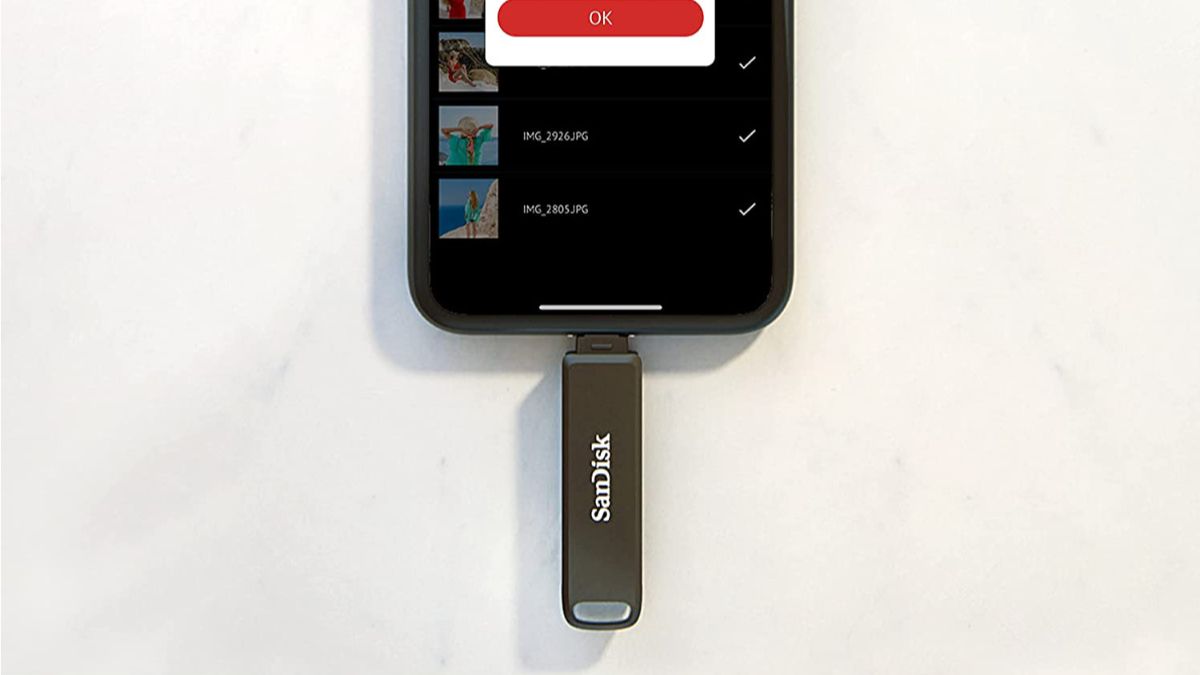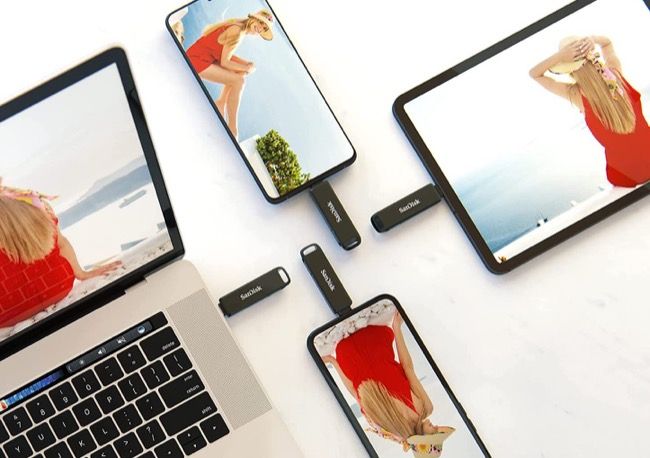Quick Links
Flash drives might not be as popular as they used to be, but it's good to have options if you're transferring data or backing up your iPhone. Think you need a Lightning adapter to use one? Think again.
Why Buy a Flash Drive for your iPhone?
The uses for an iPhone flash drive are less clear-cut than they used to be with the advent of services like iCloud Drive and other cloud storage formats. But you may still like the idea of physical storage and the reliability that connecting a device directly to your iPhone provides. Plus, they're another way to get an offsite backup.
Flash drives built for use with an iPhone will commonly have two connectors: a Lightning port on one end and a standard USB connector on the other (either older Type-A or newer Type-C). Take the SanDisk iXpand Flash Drive Luxe with USB-C or the SanDisk iXpand Flash Drive Go with USB-A for example. These devices are designed to be connected to both your iPhone or iPad, and a Mac, PC, or even Android device.
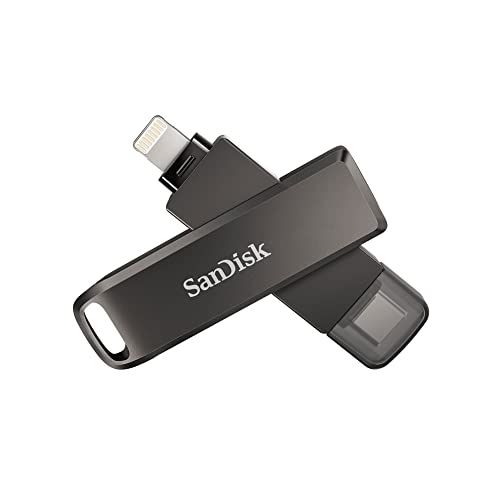
SanDisk 256GB iXpand Flash Drive Luxe
Perfect for use with modern MacBooks or Windows laptops that only have USB-C, transfer files between your iPhone and computer with up to USB 3.0 speeds.
This makes transferring files between the two relatively easy, though be aware that Apple's Lightning connector is limited to USB 2.0 speeds (a maximum theoretical throughput of 480Mb/s). On the upside, many of these drives now support USB 3.0 speeds (5Gb/s) or above on the computer end.
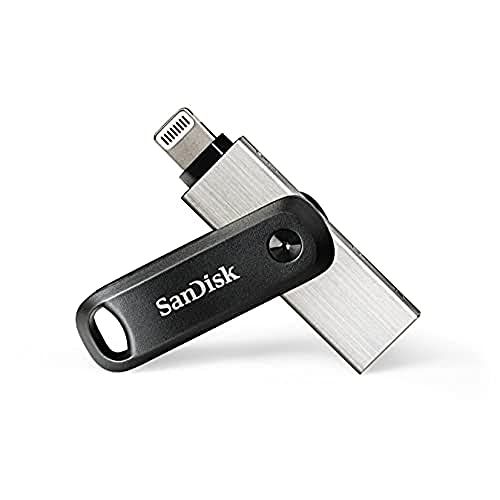
SanDisk 256GB iXpand Flash Drive Go
With a Lightning connector on one end and a standard USB Type-A connector on the other, use the SanDisk iXpand Flash Drive Go to make backups or transfer files between an iPhone or iPad and Mac or Windows computer.
Flash drives also offer an easy offline backup solution for your Photos library. Many include an app that will take care of this for you, removing the need to upload your media library to iCloud and pay an additional monthly fee.
You might be interested in using a local transfer and backup solution like this if your internet connection is unreliable or you frequently have trouble transferring files using AirDrop.
Transfer Data with Files or Third-Party Apps
A compatible USB drive should appear under "Locations" on the "Browse" tab of the Files app on your iPhone. If you somehow managed to delete it you can download Files from the App Store.
With your flash drive connected, use Files to manage data. You can access files on your drive, copy them to your iPhone, or transfer files to your flash drive using Apple's built-in app. Tap and hold a file to see options to Copy or Delete, or just tap on it to open it in a compatible app.
If you want to use your flash drive to back up your Photos library you should be able to do so using an app recommended by the manufacturer. For example, SanDisk uses the SanDisk iXpand Drive app to provide quick access to backup and free space operations. Cheaper drives like the Sunany USB Flash Drive seem to rely on apps with shaky reputations like LUV-Share for their backup operations.
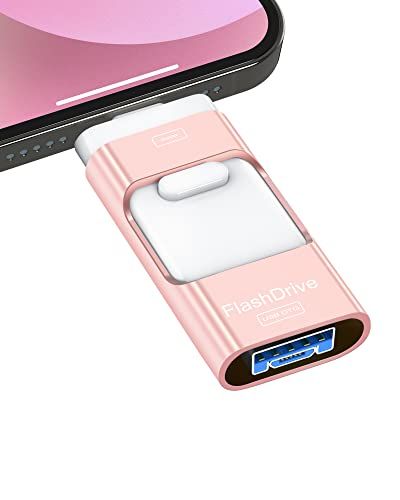
Sunany USB Flash Drive 256GB
A cheap and cheerful iPhone-compatible flash drive, with Lightning, USB Type-A, USB Type-C, and Micro USB connectors for use with a large number of devices.
You'll need to grant the app access to your Photos library when prompted for this to work. Even though some apps advertise that you can use the drive to record video, this always involves recording first to your internal memory and then copying it to the external drive. These drives do not expand your iPhone storage, they simply provide "cold storage" for files you don't need access to all of the time.
USB-C Is Coming to iPhone (at Least in Europe)
Standard flash drives may work with the right adapter, but Apple states the drive "must have only a single data partition, and it must be formatted as FAT, FAT32, exFAT (FAT64), or APFS" and "may need the Lightning to USB Camera Adapter, Lightning to USB 3 Camera Adapter" for use with an iPhone. It's easiest to buy a flash drive with everything you need built in.
Since the EU decided that all smartphones will require USB-C by 2024, Apple has reluctantly agreed to bring USB-C to the iPhone---at least in Europe, although it remains to be seen what will happen in the rest of the world. This means your flash drive with a Lightning connector may require an adapter (like Apple's USB to Apple Pencil adapter) to work with the iPhone 15, assuming the USB-C rollout is complete by then.
Just keep that in mind if you're thinking of picking up a flash drive for your iPhone. Alternatively, embrace the wireless future and upgrade your iCloud storage today.

